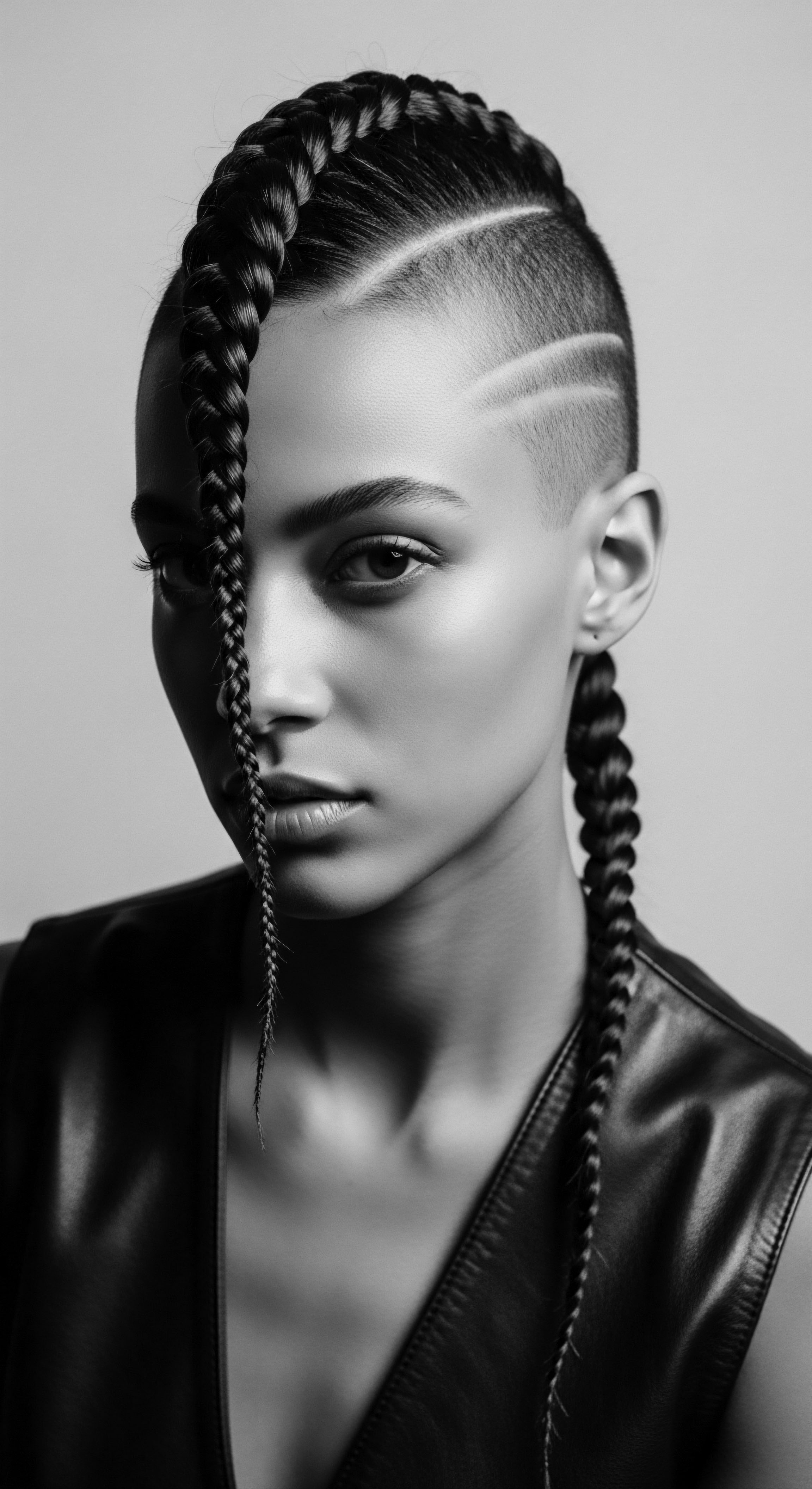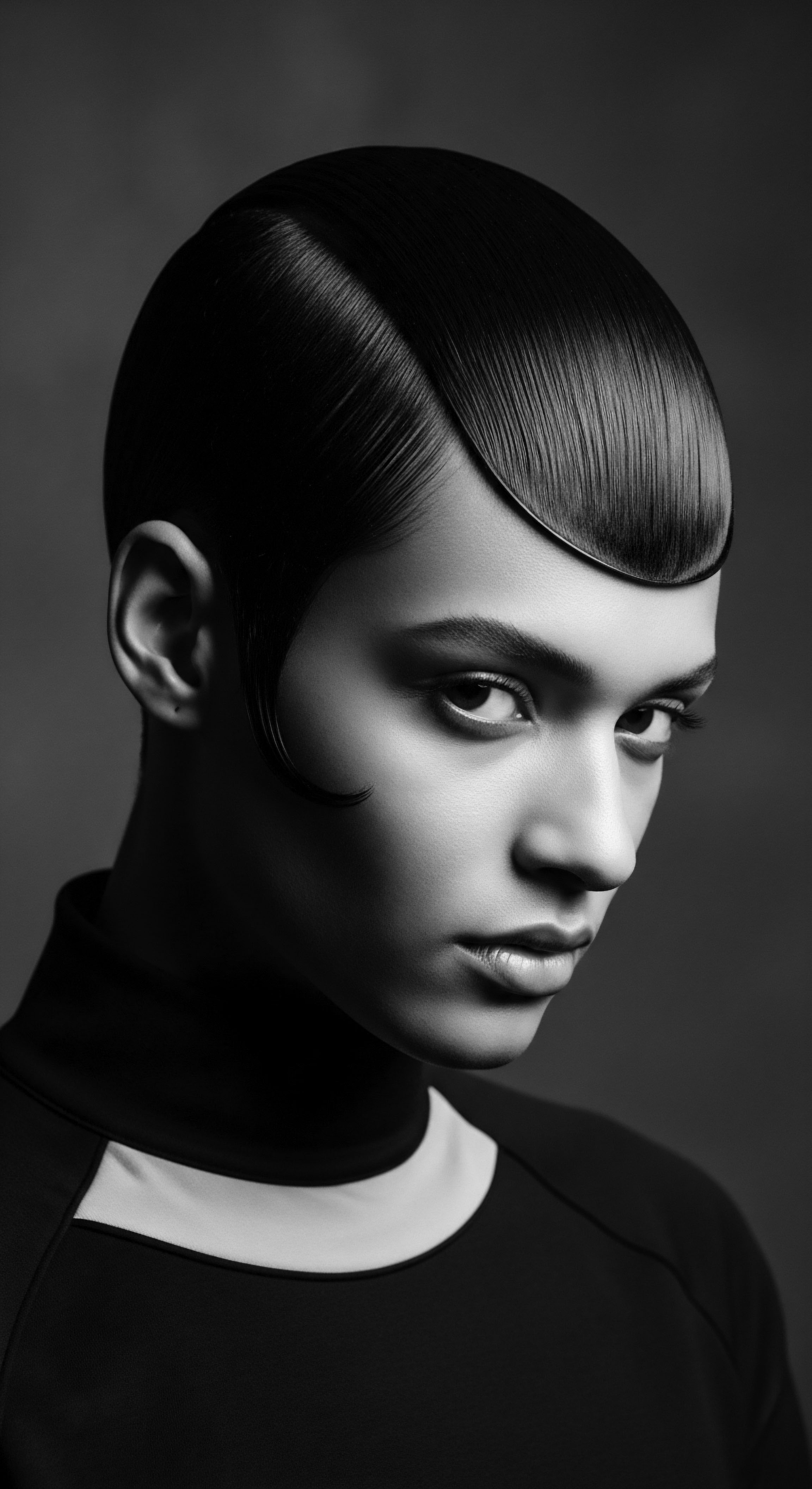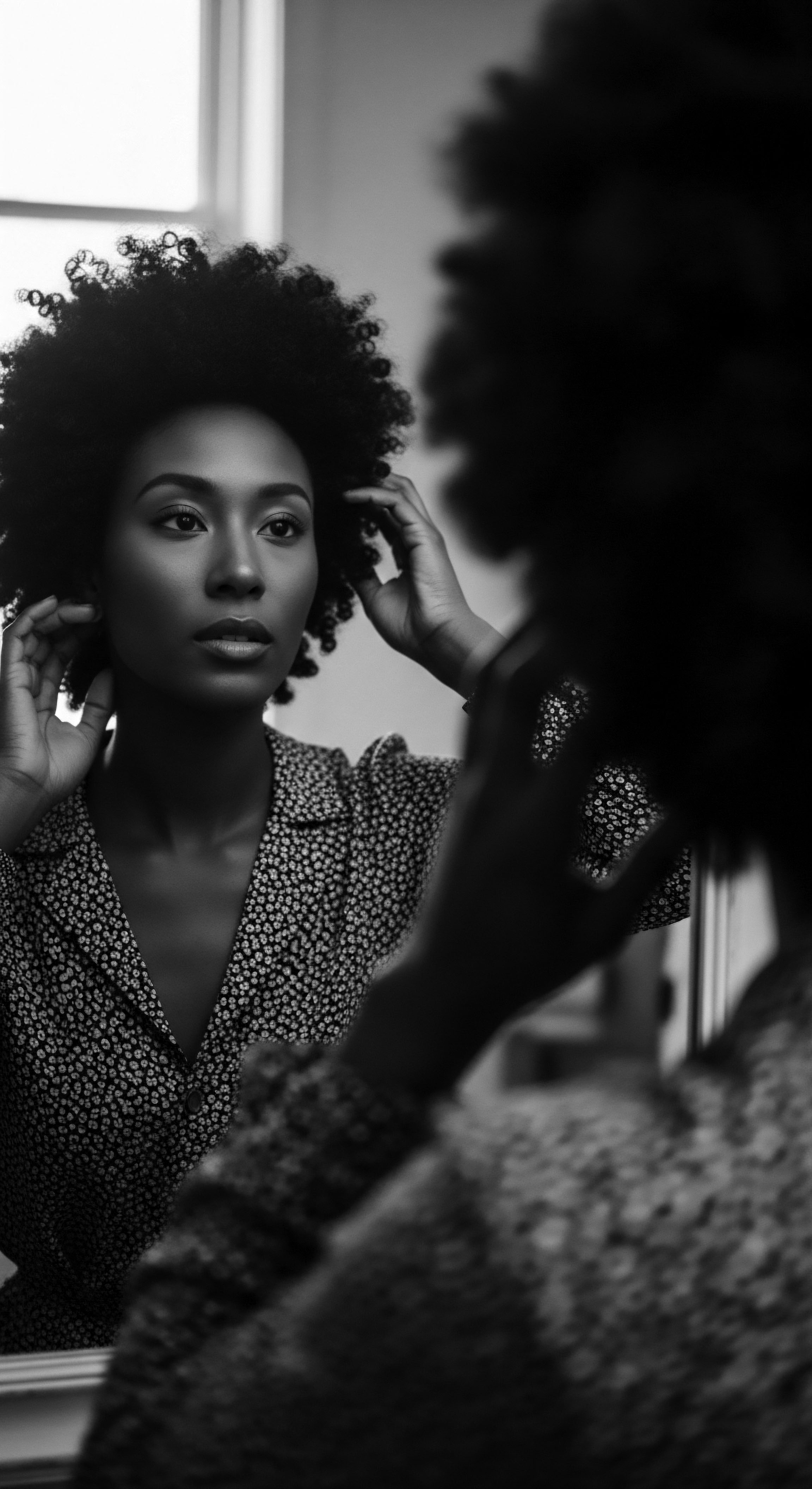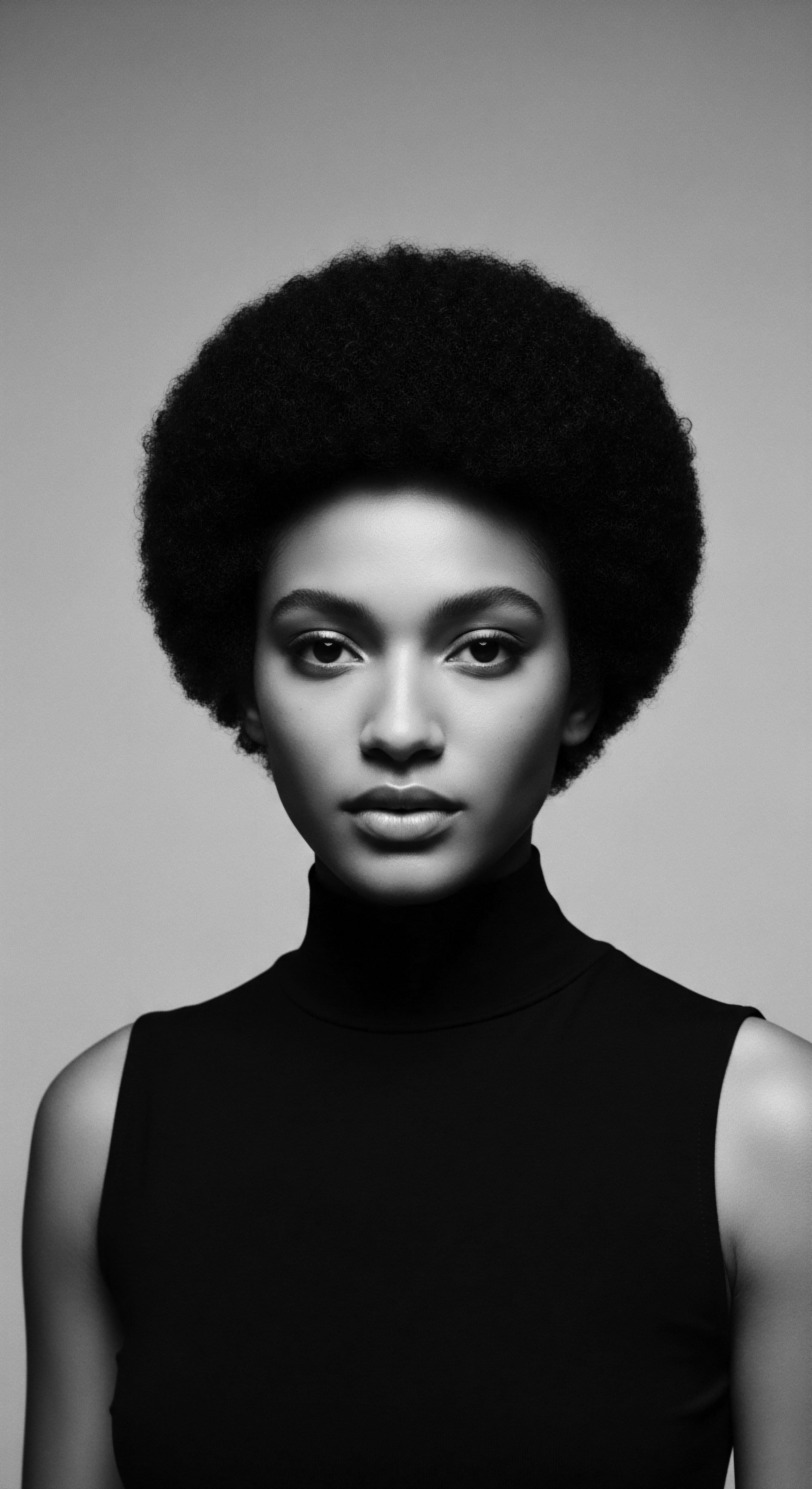
Roots
There exists a quiet hum, a resonance that echoes through time, within every coil, every kink, every curl of textured hair. This is not merely an anatomical marvel; it is a living archive, a sacred scroll etched with the stories of ancestors, their resilience, and their profound wisdom. For generations, before the advent of modern chemistry, before laboratories meticulously isolated compounds, communities across Africa and its diaspora understood a fundamental truth about hair’s vitality ❉ its nourishment lay in the bounty of the earth. They intuitively understood what contemporary science now confirms, that the strength and vibrancy of our strands find their kinship with the very proteins found within plants.
The human hair shaft, at its core, consists predominantly of keratin, a fibrous protein. This keratin is not a static entity; its integrity relies on a delicate balance of amino acids, sulfur bonds, and moisture. In textured hair, particularly, the intricate helical structure and the natural bends along the fiber render it more susceptible to environmental stress and mechanical damage. Understanding these intrinsic characteristics requires a gaze both ancient and modern, a willingness to see the scientific blueprint within the ancestral practice.
The cuticle, cortex, and medulla—these are not just labels from a textbook; they are the layers our foremothers lovingly tended with preparations derived from botanicals, preserving a heritage encoded in every strand’s very being. The external lipid layer, often thicker in Afro-textured hair, also plays a crucial role in water management, a property perhaps intuitively addressed by ancestral practices focused on sealing moisture.

What is Hair’s Ancestral Blueprint?
Before the microscope revealed the alpha-helical structures and disulfide bonds, our ancestors possessed a profound understanding of hair’s needs, passed down through generations. They observed that certain plant mucilages, rich in polysaccharide gums, mimicked the hair’s natural slipperiness, aiding in detangling and protection. This observation, rooted in empirical knowledge, aligns perfectly with today’s understanding of how humectants and conditioning agents function at a molecular level, providing lubrication and reducing friction.
The inherent porosity of many textured hair types, often higher than other hair forms, meant that ancestral remedies frequently focused on ingredients that could seal the cuticle, retaining precious moisture. This was a science of observation, of generational experimentation, where the forest, the field, and the homestead served as the ultimate laboratory.
Ancestral practices intuitively understood the fundamental needs of hair, a wisdom now affirmed by molecular science.
The nomenclature of textured hair, while today categorized into numerical and alphabetical types, historically found its descriptors in cultural contexts—terms reflecting status, community affiliation, or spiritual connection. These terms, often expressed through elaborate styles, demonstrated a living codex of identity. For instance, in pre-colonial African societies, intricate hairstyles could signify age, marital status, social rank, and even spiritual beliefs.
This rich cultural history, woven into the very styling of hair, speaks to a holistic understanding of hair’s place, far beyond its mere physical attributes. The traditional practices were not simply about aesthetics; they were acts of communication, connection, and spiritual devotion, a deep reflection of self and community.
- Yoruba hair traditions ❉ Often linked hair to spiritual power and used braided styles to communicate with deities.
- Mende cultural proverbs ❉ Referred to hair as a “Black crown,” associating it with abundance.
- Ashanti people of Ghana ❉ Integrated Adinkra symbols into hairstyles, each symbol conveying a specific message or proverb.
These historical perspectives ground our contemporary understanding of plant proteins, shifting our view from simple chemical compounds to vital elements within a larger, inherited narrative of care. We recognize that the plant-based ingredients cherished in ancestral routines provided not just surface conditioning, but the very building blocks that reinforced hair’s inherent protein structure.

Ritual
The tender application of infused oils, the communal braiding sessions, the whispered recipes passed from elder to child—these are the rhythms of ancestral hair care, living rituals steeped in meaning. These practices, far from being mere folklore, represent a sophisticated engagement with plant life, yielding benefits that modern science now elucidates in terms of protein synthesis and structural integrity. The hands that once kneaded shea butter or steeped herbs knew, through generations of lived experience, the transformative power residing within these natural gifts.

How Do Plant Proteins Enhance Hair Strength Today?
Consider rice water, a practice revered for centuries, particularly across Asia and parts of the diaspora. The women of the Yao ethnic group, renowned for their long, lustrous hair, have long utilized fermented rice water in their routines. Contemporary research reveals this ancient elixir is a powerhouse of amino acids—the fundamental units that build proteins. These amino acids, such as cysteine and methionine, directly support hair’s protein structure, enhancing its resilience and reducing breakage.
Moreover, rice water contains inositol, a carbohydrate that can repair damaged hair and offer protection against future harm. This substance forms a protective film on each strand, acting as a natural armor against environmental aggressors.
The practice of using fermented rice water, long central to certain traditions, demonstrates an early understanding of botanical protein benefits for hair.
Another profound example comes from the use of okra. This vegetable, recognized for its mucilage, has been a traditional ingredient in hair care across parts of Africa, Asia, and the Americas. The gel-like consistency of okra mucilage is now understood to be rich in amino acids and polysaccharides. These compounds contribute to hair strength by providing a protective coating and enhancing moisture retention.
Okra also brings a suite of vitamins, minerals, and antioxidants, nourishing the scalp and promoting healthy growth. This ancestral ingredient, when applied to hair, provides natural conditioning, making hair feel smoother and more pliable, effects directly attributable to its protein and moisturizing properties.
Flaxseed, a resilient plant cultivated since antiquity, also holds a significant place in heritage hair care, particularly in communities seeking natural definition and conditioning for coiled textures. Its seeds are a remarkable source of plant proteins, ranging from 10.5% to 31%. These proteins, along with omega-3 fatty acids and lignans, contribute significantly to hair health.
Flaxseed gel, made from simmering the seeds, provides a natural hold and definition for curly and coily hair, while its protein content strengthens strands and improves elasticity. It helps reduce hair loss by inhibiting follicle inflammation and stimulating circulation in the scalp, an effect supported by its wealth of proteins and antioxidants.
| Traditional Botanical Rice Water |
| Ancestral Application Used as a rinse for strength and shine in parts of Asia and the diaspora. |
| Contemporary Scientific Link to Protein Rich in amino acids (e.g. cysteine, methionine) that serve as keratin building blocks, promoting strength and reducing breakage. Contains inositol for repair. |
| Traditional Botanical Okra Mucilage |
| Ancestral Application Applied as a conditioning gel, for hydration and manageability. |
| Contemporary Scientific Link to Protein Contains amino acids and polysaccharides that coat hair strands, aiding strength and moisture retention, mirroring protein film-formers. |
| Traditional Botanical Flaxseed |
| Ancestral Application Used as a gel for curl definition, strength, and scalp health. |
| Contemporary Scientific Link to Protein Significant protein content (10.5-31%) providing essential amino acids for internal hair strengthening and external coating. |
| Traditional Botanical Shea Butter |
| Ancestral Application A staple for moisturizing and sealing African and diasporic hair. |
| Contemporary Scientific Link to Protein While not a protein source, it forms a protective lipid barrier, supporting protein integrity by preventing moisture loss, a key factor for hair's mechanical strength. |
| Traditional Botanical Aloe Vera |
| Ancestral Application Applied for scalp health, soothing, and conditioning. |
| Contemporary Scientific Link to Protein Contains amino acids and enzymes; supports a healthy environment for follicle protein synthesis, indirectly contributing to hair health. |
| Traditional Botanical These traditional ingredients, long valued in heritage hair care, possess molecular compositions that align with modern understanding of protein benefits for hair. |
These ancestral practices, often interwoven with communal gatherings, transcended simple grooming. The act of hair styling, whether braiding, twisting, or oiling, was a social ritual, a time to bond with family and friends. This deep human element, intertwined with the botanical wisdom, represents the very soul of hair care heritage, where nourishment for the body and spirit went hand in hand.

Relay
The journey of textured hair heritage is a saga of enduring spirit, where ancestral hair care rituals, rich with plant-based wisdom, became acts of resistance and affirmation. When Africans were forcibly taken from their homeland, they carried their braiding traditions with them, styles that evolved into cornrows in the Americas, becoming symbols of cultural preservation and resilience. This deep connection to hair transcended mere aesthetics; it was a living language, a way to maintain identity in the face of profound adversity. The intricate patterns of braids, for example, were speculated to serve as maps, carrying rice grains to plant upon escape, a hidden message of freedom woven into the very strands.

What Did Ancestral Wisdom Understand about Plant Proteins and Hair Structure?
The understanding that plant proteins play a crucial role in hair integrity, while not articulated in modern scientific terms, was inherent in the selection and application of ancestral botanical remedies. Hair is primarily composed of keratin, a protein whose strength relies on disulfide bonds. When these bonds are compromised through environmental damage, chemical treatments, or mechanical stress, hair becomes fragile.
Ancestral practices, through the consistent use of certain plant extracts, were, in essence, providing precursors and supportive compounds that maintained or restored the integrity of this keratin structure. For instance, flaxseed contains specific amino acids such as glutamic acid, serine, arginine, lysine, and leucine, all vital for hair health.
A poignant historical example illustrates this profound connection between ancestral practice, resistance, and the intuitive application of hair science. During the 18th century, the Tignon Law in Louisiana, a colonial decree, forced Black women to cover their hair with a tignon (headscarf) as a means of social control and to signify their subordinate status. Yet, these resilient women transformed this tool of oppression into a statement of defiance, adorning their headwraps with vibrant fabrics, jewels, and intricate designs. This act of rebellion, though external, underscored the deep-seated cultural significance of hair.
Simultaneously, the continued practice of using traditional oils and plant-based preparations beneath these coverings ensured the physical health of their hair, preserving its intrinsic structure and, by extension, a part of their identity. The bonnets themselves, initially simple protective coverings crafted from scraps, evolved into essential tools for preserving natural texture and preventing tangles, a practice rooted in the recognition of textured hair’s unique needs for protection from friction and moisture loss, especially during sleep.
The historical use of head coverings, though imposed as a tool of oppression, was subverted into an act of cultural preservation that protected hair’s inherent protein structure.
The science now validates the efficacy of these protective styles and the plant-based care routines. When hair is shielded from friction and moisture loss, its keratinous structure is less likely to break down, preventing split ends and preserving length. Research into textured hair confirms its unique structural variations, often with a less rigid medulla and a unique fibrillar (keratin) structure that can be heavily coated with lipids. This makes consistent, gentle care with moisturizing and strengthening agents, such as those found in plant proteins, especially significant.
Here are some examples of traditional plants and their scientific properties that support hair health:
- Amla (Emblica officinalis) ❉ Rich in tannins, which can enhance the affinity between hair and dyes, and antioxidants, contributing to overall hair health.
- Bhringraj (Eclipta alba) ❉ Used in Ayurveda to stimulate hair follicles and promote growth, with studies suggesting its role in accelerating the hair growth stage.
- Hibiscus (Hibiscus rosa-sinensis) ❉ Known for stimulating hair follicles and increasing follicle size, it contains vitamin C and A, and has anti-inflammatory qualities.
- Onion (Allium cepa) Juice ❉ Provides sulfur, which helps synthesize collagen, a protein that supports hair growth, and also aids in blood flow to the scalp.
The Black hair care industry today, a multi-billion dollar enterprise, stands as a testament to the enduring legacy of these ancestral practices. Pioneers like Madame C.J. Walker, a Black American millionaire in the early 1900s, built their businesses on products tailored to the needs of textured hair, echoing the traditional focus on nourishment and protective care. This continuity, from ancient botanical wisdom to modern product development, represents a powerful relay of knowledge, where science increasingly offers the vocabulary to articulate what generations already knew.

Reflection
The echoes of ancestral hair care rituals reverberate through the modern understanding of plant proteins, reminding us that knowledge is a continuum, not a series of isolated discoveries. Textured hair, with its diverse shapes and profound cultural resonance, stands as a testament to ingenuity and resilience. The conscious choices our foremothers made, selecting certain botanicals for their inherent qualities, were not simply acts of beautification; they were expressions of connection to the earth, to community, and to self. This living legacy continues to shape contemporary practices, urging us to seek harmony between ancient wisdom and scientific validation.
Roothea, in its very soul, seeks to honor this intricate relationship, recognizing that every strand carries the weight and wonder of history. The journey from the quiet forest gathering of plants to the meticulous analysis of amino acid profiles in a laboratory represents a circular path of discovery, where the past informs the present, and the present illuminates the past. We are invited to understand that the strength, the sheen, the very health of our hair, is intertwined with the deep heritage of care passed down through generations. This is a story of survival, of self-definition, and of the enduring power of ancestral wisdom, continually affirmed by the unfolding insights of science.

References
- Byrd, Ayana, and Tharps, Lori L. Hair Story ❉ Untangling the Roots of Black Hair in America. St. Martin’s Press, 2001.
- Jacobs-Huey, Lanita. From the Kitchen to the Salon ❉ Language and Becoming in African American Women’s Hair Care. Oxford University Press, 2006.
- Mane, S.V. Manthen, S.K. and Mhamane, S.S. “Formulation and Evaluation of Herbal Hair Conditioner Using Okra Mucilage.” International Journal of Pharmaceutical Sciences and Research, 2019.
- Menezes, Rogério. “The Genomic Variation in Textured Hair ❉ Implications in Developing a Holistic Hair Care Routine.” Cosmetics, vol. 9, no. 5, 2022.
- Panyayong, S. et al. “Effect of Fermented Rice Water on Hair.” Journal of Emerging Technologies and Innovative Research, vol. 8, no. 1, 2021.
- Praveen, Kumar. “An Overview of the Most Important Effective Medicinal Plants on Hair Growth and Treatment of Alopecia.” Journal of Pharmacy & Bioresources, vol. 8, no. 1, 2021.
- Sapkal, Rutik N. et al. “Exploring herbal remedies for hair care ❉ A review of medicinal plants and their benefits.” GSC Biological and Pharmaceutical Sciences, vol. 31, no. 2, 2025.
- Sieber, Roy, and Herreman, Frank. Hair in African Art and Culture. Museum for African Art, 2000.
- Tyagi, Naman, et al. “Unlocking Radiance ❉ The Dynamic Duo of Flaxseeds and Aloe Vera in Hair Mask for Bioactive Brilliance.” Journal of Emerging Technologies and Innovative Research, vol. 11, no. 12, 2023.
- White, Deborah Gray. Ar’n’t I a Woman? ❉ Female Slaves in the Plantation South. W. W. Norton & Company, 1999.
